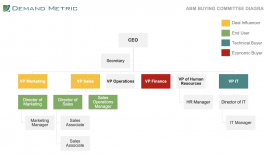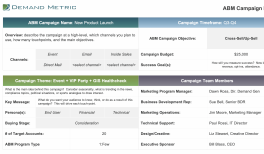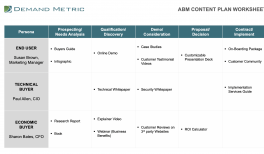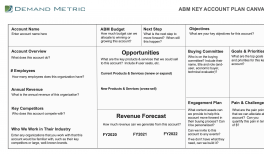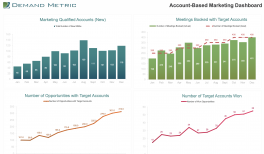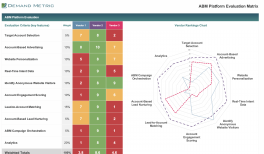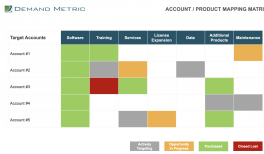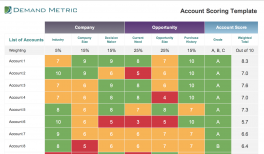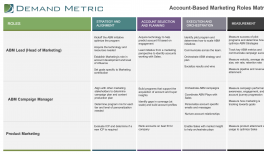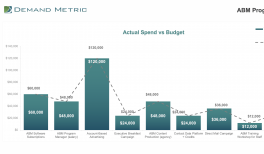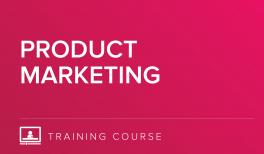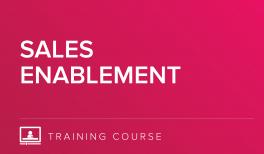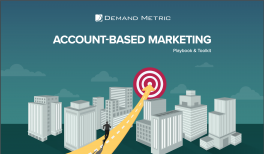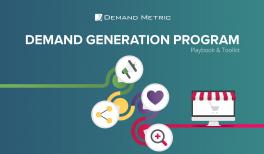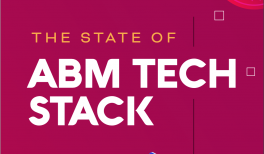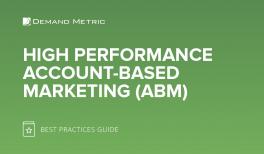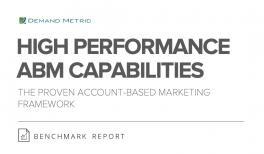You need to describe the type of company that would benefit the most from your products or solutions.
Ideal Customer Profile Template
Resource Overview
Related Resources
Your Problem
You need a precise understanding of the type of company that you intend to target.
Our Solution
We created the Ideal Customer Profile (ICP) Template to help you develop a fictional persona of the type of company that you intend to target.
Use the ICP Template to describe the type of company that would benefit the most from your products or solutions.
Sections of this template include:
- Firmographics
- Psychographics
- Behavioural
- Environmental
Key Benefits
- can be easily customized
- save hours of time formatting
- great communication tool
- aligns the organization
- A core component of your ABM plan
Microsoft PowerPoint
Estimated Time Required: 2 Hours
Skills Required: PowerPoint (Basic)
Background
Correctly identifying a relatively small number of high-value accounts is the key to helping an ABM initiative gain traction. The point of ABM is putting marketing eggs into fewer, better baskets, so it’s imperative to choose the right baskets. Marketers can subdivide these accounts into tiers (Strategic, Lite, Programmatic), as discussed previously.
Of all planning phase tasks, selecting the right target accounts can seem especially daunting given its critical importance. The ABM approach shines here, however, as effective ABM teams combine the traditional approaches of both sales and marketing. Sales brings their manual account selection process to the table, while marketing brings the data analytics approach. These two approaches often intersect at ideal target accounts. Additionally, adding marketing technology to the “hunch” of a sales rep makes ABM the B2B strategy it is today—it allows that “hunch” about one account to scale to many other accounts the analytic software identifies. Marketing uses data and innovative technology to understand which segments of the market are best for business. Sales uses their experience and knowledge in the field to select accounts they know they can sell into. Your account list is most accurate when you combine the skillsets of Marketing and Sales.
Build an initial target account list by identifying your best market segments. Use our Ideal Customer Profile template to help you analyze characteristics such as industry, region, revenue size, and employee count. The initial list is broad and addresses most of your business at this point in the process. Next, develop a data-driven model that defines which of these accounts in your initial list are the best fit based on what they have in common with your most successful customers. The type of model you decide to use depends heavily on the quality and quantity of your opportunity data. In other words, you must know what successful deals look like in order to determine your best fit accounts. The more positive examples you have, the more successful your model will be.
There are three types of data models you can use to select target accounts. If you’re limited, you can always do a white space analysis to determine which accounts are in your total addressable market (TAM) and prioritize them by revenue potential. This isn’t the most strategic approach, so we recommend using either the look-alike model or predictive model if you’re not as limited with positive examples. The look-alike model generates your account list based on the number of prospective accounts that most closely resemble your positive examples. The predictive, and most strategic, model leverages a proprietary algorithm that uses multiple data sources including in-house data and third-party data to select your target accounts. These models are typically the most valuable since they leverage artificial intelligence (AI) powered technology that scales valuable sales intel. Predictive models help you select your target accounts by shedding light on common indicators of your buyer’s behavior and profile. Once you select your target accounts using a digital approach, finalize your list by cross-referencing it with insights gleaned manually from the sales team.
Sales will identify the subset of named accounts within your target account list to focus on and sell into. However, it’s strategic for marketing to look at named account metrics as they relate to target account metrics. Not only does it help you optimize your target account list, but often, your named account list serves as an even more focused list that both teams will use.
Next, distribute target accounts into tiers. Typically, only one to five accounts will land in the strategic ABM tier to allow for one-to-one engagement. The majority of your accounts should fall into the remaining tiers of ABM Lite and Programmatic ABM. Incorporate the accounts in your ABM Lite tier into strategic persona-based campaigns that address the shared attributes of this target account list. Programmatic ABM will address the remaining subset of accounts within your list and will have the least amount of personalization. Keep in mind that this process is iterative and requires updating at regular intervals. Often, this is done twice a year or annually depending on the size of your list and sales team.
Visit our Demand Generation & ABM Hub for other great resources.


